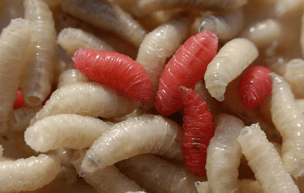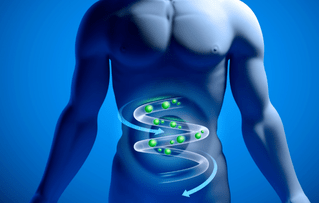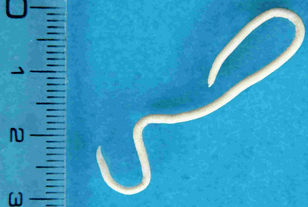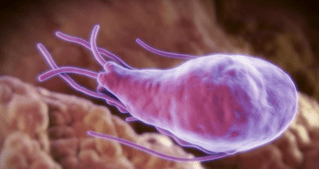It is difficult for an ordinary person to imagine how many parasites can endanger their health. These "settlers" can live in the human body for years, literally sucking life out of it and poisoning them with their venom.
Types of parasites

From a medical point of view, parasites include unicellular and protozoan. Depending on their habitat, they are divided into exoparasites (lice, bugs, and others) and endoparasites.
Endoparasites have their own subspecies:
- Insect-laden larvae.
- Protozoa (amoeba, lamblia).
- Bead patterns (worms or worms).
Routes of Infection
Every parasite has its own pathway into the human body. The most common method is through food, i. e. water or food. Many insect parasites can carry larvae, polluting the environment. By consuming raw water, unwashed and not thoroughly prepared food, a person becomes infected with parasites.
Certain species are directly mediated by personal relationships - this path is called the contact household. It is not necessary to contact the distributor directly for the infection, it is enough to use household items. Thus spread enterobiasis and some other parasitic forms.
The path of infection spread by an equally popular vector. In this case, the parasites are carried by blood-sucking insects. This way they can be obtained after being bitten by a mosquito or other insect.
Parasites enter last percutaneously, the second name is active. Infection occurs by the penetration of larvae through the mucous membranes and skin. This is due to contact with contaminated soil or water in the water body.
Symptoms
Parasites in the human body can live for a long time and not manifest. The symptoms are there, of course, but they are disguised as a different disease. That is why a person does not know for a long time that he is infected.

Symptoms most often occur depending on the location of the larvae, but the body may indicate infection and other manifestations. The most common are
- Puffiness,and constant, indicates the presence of worms in the small intestine;
- Diarrhea.Caused by parasites absorption of sodium chloride; Constipation:
- Worm tangles can clog some organs;
- Joint and muscle pain.These pains are caused by the migration of larvae through the human body, to which the immune system responds;
- Allergy.Parasites themselves are allergens in the body, and damage to the stomach walls contributes to indigestion and the entry of food molecules into the bloodstream;
- Appearance of granulomas.It is a kind of neoplasm that envelops the cells of the body of dead ova of parasites;
- Dermatological manifestations;
- anemia.Often people suffer from anemia, precisely because of the activity of parasitic forms;
- Sharp weight fluctuations;
- Mental disorders.In vital activity, parasites emit toxins that negatively affect the host’s nervous system. Body poisoning can result in neurosis, depression, anxiety;
- Bruxism.This is the gnashing of teeth during sleep. This is the nervous system’s response to the appearance of foreign bodies. But this fact is not convincingly proved by science;
- Sleep disturbance.It usually stems from unpleasant feelings. Examples include pinworms that lay eggs at night. Leaving the rectum, pinworm secretes a toxin that causes severe itching;
- Dysbacteriosis;
- Oncological diseases;
- Chronic fatigue.Occurs due to lack of nutrients, which negatively affects the condition of the body;
- Respiratory diseases.Many parasites can live in the respiratory system, which can cause disease. Other parasites cause colds as they pass through the respiratory system;
- Immune disorders.The absorption of most vitamins by parasites leads to a weakening of the body's barrier functions and a greater likelihood of disease.
But there are also symptoms that are characteristic of the presence of parasites in a particular human organ. For example, papillomas, the appearance of bald spots on the head, a cracked heel, and so on can further signal the life of liver parasites. In addition, the presence of certain types of parasitic forms can provoke certain types of diseases in humans.
Detection of Disease

Unfortunately, some doctors do not perform their duties and do not send a person for special studies to detect parasites in the body. The most common analysis is the transport of feces to the eggs of worms. The fact that parasites can live in different organs.
There have been cases where worms have been found in the human brain and eyes. Is it likely that their eggs from the brain will end up in the feces? Probably not. Even if there are worms in the intestines, the eggs of the parasites are not necessarily found.
First and foremost, the doctor should visually examine the patient. Externally, the presence of human parasites can be suspected. The easiest way to detect them is with a blood test to detect specific antibodies against worms.
Description of human parasites
There are dozens of parasites in the human body.
worms or helminths are a type of worm.Their size depends on the species, for example, female roundworms reach 40 centimeters. Some species may exceed 10 meters. Worms are a favorite habitat for the intestines, but are often found in other organs, even the brain.
For example, worm larvae circulate in the body, collecting nutrients and returning to the intestines where they grow and multiply. They often live in the respiratory tract. The presence of ascaris in the human body is associated with abnormal work of internal organs, poisoning of the body, allergic manifestations and even an increase in temperature.
Tapeworms include the porcine tapeworm that migrates through the blood to the brain. This parasite enters the body through poorly processed meat products. This worm lives for 20 years.
This parasite enters the body through poorly processed meat products. This worm lives for 20 years.
Pinworms most commonly develop in children, but are quite common in adults. These worms are small, 1 centimeter long. The spread of pinworm eggs takes place in a contact-household manner. The female exits the rectum and lays eggs in the outer folds of the anus. The toxin released by the female causes severe itching, which leads to the eggs falling on the human hand and passing through all the surrounding objects.
The second name for enterobiasis is the disease of dirty hands. Probably any infected person who comes in contact with the carrier. Therefore, when pinworms are found, it is recommended to treat the whole family.
Toxocarais a type of parasite that lives in dogs. They enter the human body and develop well in it. Unlike these worms found in the body of dogs, human toxoid arms do not come out, but they affect many organs and cause certain diseases. It can become infected through toxins through the soil, as the larvae of these worms are excreted in the feces of the dog. But the parasite’s eggs can also spread from the dog’s wet breath.
Alveococcus and Echinococcusinfect the body in many ways. Their danger is that the larvae transform into cysts, which are found in various internal organs.
Giardia is the simplest.Like pinworms, Giardia is the most common infection in children. Not only do they reduce a child’s immunity, but they also delay children’s mental and physical development.
Not only do they reduce a child’s immunity, but they also delay children’s mental and physical development.
This list is by no means complete. The main danger of parasites is that no one is free of infections. Their secrecy leads to man feeding the parasites for years without suspicion. Adherence to personal hygiene, constant wet cleaning of the house, and adherence to heat treatment standards for meat products are not bad prevention in infection. In order to prevent the spread of parasites, it will be useful to undergo a medical examination and submit the necessary tests every six months.
















































